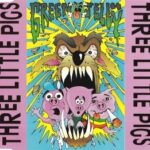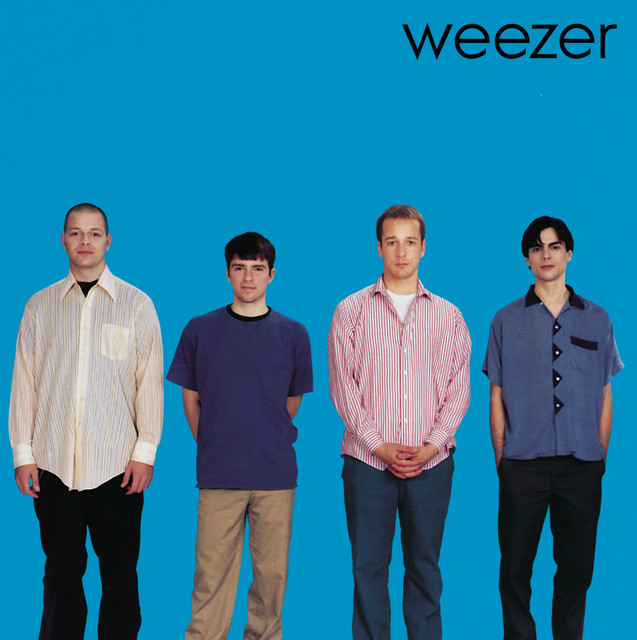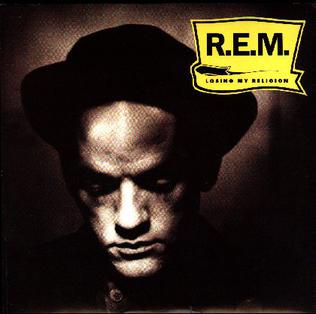 In 1992, the American comedy-metal band Green Jellÿ released “Three Little Pigs,” a track that would become a defining moment in alternative rock and novelty music. The song took a classic children’s tale and turned it on its head, combining humor, theatricality, and aggressive rock instrumentation to create a unique and unforgettable musical experience. Unlike conventional rock tracks of the early 1990s, “Three Little Pigs” was part parody, part performance art, and entirely unforgettable, blending punk, metal, and comedic storytelling in a way that had rarely been attempted on mainstream radio. The song’s quirky approach, outrageous vocal delivery, and satirical lyrics captured the attention of listeners, proving that even in an era dominated by grunge and alternative rock, there was room for playful, theatrical, and absurdist musical expression.
In 1992, the American comedy-metal band Green Jellÿ released “Three Little Pigs,” a track that would become a defining moment in alternative rock and novelty music. The song took a classic children’s tale and turned it on its head, combining humor, theatricality, and aggressive rock instrumentation to create a unique and unforgettable musical experience. Unlike conventional rock tracks of the early 1990s, “Three Little Pigs” was part parody, part performance art, and entirely unforgettable, blending punk, metal, and comedic storytelling in a way that had rarely been attempted on mainstream radio. The song’s quirky approach, outrageous vocal delivery, and satirical lyrics captured the attention of listeners, proving that even in an era dominated by grunge and alternative rock, there was room for playful, theatrical, and absurdist musical expression.
The narrative of “Three Little Pigs” is both familiar and radically reimagined. Green Jellÿ’s version of the classic story gives each pig a distinct personality, amplifying their quirks and exaggerating their behavior for comedic effect. The wolf, too, is transformed from a menacing predator into a figure of dark absurdity, creating a story that is simultaneously humorous and chaotic. With lines delivered in theatrical, exaggerated voices and punctuated by heavy guitar riffs, the song turns a simple fairy tale into a mini-rock opera, complete with satire, social commentary, and irreverent humor.
Green Jellÿ: Masters of Musical Absurdity
Green Jellÿ (pronounced “Green Jello”) had long embraced a philosophy of combining music with outrageous humor, slapstick, and pop culture parody. Formed in the late 1980s, the band carved out a niche at the intersection of comedy, punk, and metal, known for their chaotic live shows, costumes, and over-the-top antics. “Three Little Pigs” exemplifies the band’s distinctive approach, taking a well-known story and infusing it with exaggerated personalities, theatrical narration, and heavy rock instrumentation.
By the early 1990s, Green Jellÿ had honed their style of combining humor with musical proficiency. While their songs often leaned toward the absurd, they were rooted in genuine musicianship, featuring tight riffs, energetic rhythms, and memorable hooks. “Three Little Pigs” represented the pinnacle of this approach, blending storytelling, satire, and musical skill in a way that appealed to both alternative rock fans and audiences seeking entertainment outside mainstream conventions.
Lyrics and Storytelling
The lyrics of “Three Little Pigs” are a masterclass in satirical storytelling. The song opens with a narrator introducing the three pigs, each portrayed with exaggerated, humorous traits. The first pig is lazy and careless, the second somewhat cautious but naive, and the third a hard-working, clever individual who ultimately outsmarts the wolf. Green Jellÿ’s vocal delivery enhances the humor, with multiple voices providing distinct characterizations for the pigs and the wolf, creating a dynamic and theatrical listening experience.
The wolf, traditionally the antagonist of the story, is rendered both threatening and absurd. His dialogue, delivered with exaggerated menace and occasional humor, amplifies the song’s satirical tone. By exaggerating the personalities of both the pigs and the wolf, Green Jellÿ transforms a simple moral tale into a commentary on human behavior, societal roles, and the absurdities of storytelling itself. The song’s humor, irony, and performative delivery turn the narrative into a darkly comedic miniature epic.
Musical Composition and Style
Musically, “Three Little Pigs” blends elements of punk rock, heavy metal, and novelty music. The guitar riffs are crunchy and aggressive, providing a counterpoint to the humorous narrative, while the rhythm section drives the story forward with relentless energy. The song’s structure is unconventional, reflecting its narrative focus: rather than adhering strictly to verse-chorus patterns, the track unfolds episodically, following the story’s progression and punctuating key moments with musical flourishes, pauses, and tempo changes.
Green Jellÿ’s use of multiple vocal styles is central to the song’s appeal. The exaggerated character voices, ranging from high-pitched squeals to guttural growls, create a theatrical landscape that engages the listener as both audience and participant in the story. The interplay between musical aggression and vocal comedy produces a unique tension, allowing the listener to enjoy the song as both a musical work and a comedic performance.
The production, while intentionally rough around the edges, enhances the chaotic energy of the track. By avoiding overly polished studio techniques, Green Jellÿ preserved the rawness, spontaneity, and absurdity that define their aesthetic. The combination of narrative-driven structure, aggressive instrumentation, and theatrical vocal delivery ensures that “Three Little Pigs” stands out as a distinctive and memorable entry in the early 1990s rock scene.
Reception and Cultural Impact
Upon its release, “Three Little Pigs” achieved surprising commercial and critical success, reaching audiences well beyond the typical fan base for comedy-metal or novelty music. Its music video, featuring claymation and humorous depictions of the characters, became a staple on MTV and other music television outlets, further amplifying the song’s popularity. The track’s blend of humor, narrative, and rock energy made it a cultural touchstone, appealing to alternative rock fans, children familiar with the story, and listeners seeking inventive, genre-defying music.
The song’s impact extended beyond commercial charts. It became emblematic of a period in the early 1990s when alternative music was embracing experimentation, humor, and theatricality. In a music landscape dominated by grunge’s angst and alternative rock’s introspection, “Three Little Pigs” demonstrated that playful, absurdist storytelling could coexist with serious musicianship and reach wide audiences.
Music Video and Visual Storytelling
The music video for “Three Little Pigs” is as iconic as the song itself. Featuring stop-motion clay animation, the video brought the pigs, the wolf, and the story to life in a visual medium that amplified the song’s humor and absurdity. The exaggerated expressions, dramatic character movements, and chaotic visual storytelling complemented the song’s vocal performances and aggressive instrumentation, creating a multi-sensory experience that was both memorable and entertaining.
The video’s creativity, humor, and visual storytelling cemented the song’s status in pop culture. Its playful approach to animation and character design added a layer of charm and accessibility, allowing the song to resonate with audiences beyond traditional rock or metal fans. By combining musical aggression with visual humor, Green Jellÿ created a complete artistic package that continues to be celebrated decades after its release.
Themes and Satire
While ostensibly a comedic retelling of a classic children’s tale, “Three Little Pigs” contains deeper themes and satirical elements. The song exaggerates personality traits, moral lessons, and narrative conventions, highlighting the absurdities of human behavior and societal expectations. The pigs’ varying approaches to problem-solving reflect different attitudes toward responsibility, caution, and ingenuity, while the wolf represents chaos, danger, and unpredictability.
By amplifying these traits for comedic effect, Green Jellÿ provides commentary on the ways in which stories—whether fairy tales or cultural narratives—reflect and exaggerate human behavior. The song encourages listeners to engage critically with familiar tales while enjoying the absurdity, humor, and theatricality that define the track.
Legacy and Enduring Appeal
Decades after its release, “Three Little Pigs” remains a beloved and influential track. Its unique blend of comedy, rock, and narrative storytelling has inspired other artists to experiment with genre, form, and performance in similarly inventive ways. The song’s iconic riffs, theatrical vocals, and humorous storytelling ensure that it continues to resonate with new generations of listeners, both as a musical work and as a cultural artifact.
The track’s enduring appeal lies in its audacity and creativity. By taking a familiar story and infusing it with aggressive rock energy, comedic exaggeration, and theatrical delivery, Green Jellÿ created a song that is entertaining, memorable, and culturally significant. It demonstrates the potential of music to combine narrative, humor, and musicianship in ways that challenge conventions and delight audiences.
Live Performances and Fan Engagement
In live performances, “Three Little Pigs” is a highlight of Green Jellÿ’s shows. The band’s theatrical stage presence, costumes, and exaggerated vocal performances bring the story to life, creating an interactive and immersive experience for audiences. Fans respond enthusiastically to the song’s humor, catchy riffs, and narrative drama, often singing along to the memorable lines and engaging with the theatricality of the performance.
The song’s live longevity and fan engagement underscore its cultural resonance. It is not merely a novelty track; it is a fully realized artistic statement that thrives in performance, connecting audiences to both the humor and the musical craftsmanship of Green Jellÿ.
Conclusion: Rock, Humor, and Storytelling Perfectly Combined
Released in 1992, Green Jellÿ’s “Three Little Pigs” is a masterful fusion of comedy, rock, and narrative storytelling. Its aggressive riffs, theatrical vocals, and absurdist humor transform a classic children’s tale into a chaotic, entertaining, and culturally resonant work. The song exemplifies the band’s audacious approach to music, blending musical skill with theatricality, satire, and narrative creativity.
“Three Little Pigs” endures because it challenges conventional notions of rock music while remaining irresistibly catchy and entertaining. Its humor, storytelling, and musicianship continue to captivate audiences, demonstrating the power of music to amuse, engage, and provoke thought simultaneously. Decades after its release, the song remains a beloved and iconic entry in the history of alternative rock, comedy-metal, and narrative-driven musical performance—a testament to Green Jellÿ’s creativity, audacity, and enduring appeal.


